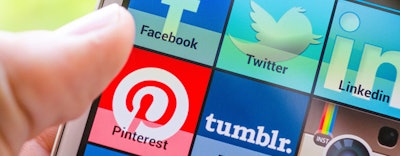
It is difficult these days to find someone not on some form of social media — especially during sports and entertainment events. The 2014 World Cup final holds the record for the most tweets per second with 9,667. The game took more than three hours to complete, accumulating more than 100 million tweets.
 Vivian Marinelli
Vivian Marinelli
Twitter, Facebook, Instagram, Tumblr and so many more social media platforms are intertwined with people's daily lives. People turn to them as a first source for news and information, a fact that athletic venue operators can use to their advantage during an emergency situation. In recent crises, we have seen the digital environment as an immediate outlet for information. The speed by which pictures and videos can be uploaded and shared is almost instantaneous.
Every facility should have an emergency preparedness plan that identifies any hazards or disasters particular to its industry and location, assesses the likelihood of each type of situation, and define a set of standard response measures that provide specific information and guidance to venue staff to protect the health, safety and welfare of fans. Adding social media as a crisis communication element takes a basic emergency response plan to the next level.
STEP BY STEP
The first step is to designate a social media crisis owner within your organization. This is likely someone on the team who manages day-to-day social media and is added to the overall crisis team. He or she will have a high-level understanding of how to relay information in a clear and concise way.
The next step is to create internal and external social media communication policies to eliminate confusion on what can and cannot be posted, identify who is in charge of posting and provide guidance on the values of transparency, consistency, connection, creativity and promptness. In order to use social media most appropriately during a crisis, your organization should already be utilizing these outlets on a day-to-day basis and have a clearly identified presence.
To stay ahead of the rumor mill and provide a strong voice during a crisis, the social media portion of your emergency response plan should also address the following aspects:
Listening post — Acquire information on what is being said about the incident. A "listening post" is simply a term for the electronic platform used to synthesize news across all types of media, including traditional print, blogs and social media. These sources may provide details such as where a threat might be and who is in need of information. Google Alerts, Twitter Search and Social Mention are just a few of the tools that an organization can use to create a listening post.
Organizational messaging — Provide the public with factual information about the crisis and your organization's response in a timely manner. Communications should first identify the disaster and the organization's role in the response, offering a voice of accuracy amid confusion. Care should be taken to ensure the information is correct and up to date, and the language used is clear, understandable and consistent. It is imperative to have the same messaging across all channels, not just social media — if information is shared with news outlets, the same message should be on Facebook and Twitter.
Transparency, honesty and sincerity — Disasters or crises do not just affect event attendees, but their families and friends, as well. Messaging aimed at these groups should acknowledge fear, uncertainty and pain, express concern for those affected, and be up front about your organization's objective and commitment to it. This builds trust among people at their most vulnerable times.
Crowdsourcing — Ask the general public for information. People who are actually in the heart of the situation might be able to provide important information, especially if they are in different parts of the venue. Their contributions can help put together missing pieces to create a more complete picture.
Post-incident monitoring — Keeping tabs on public sentiment of your organization's response is extremely important. How the public reacts is a good indicator of whether the actions your team has taken were effective. This is also a perfect time to re-evaluate the disaster plan and make updates if needed.
MITIGATING DISASTER
Earlier this year, I had the opportunity to present at the National Football League's Security Conference on the topic of social media best practices during a disaster. While the presentation focused on an NFL stadium event, social media will play an integral part in communication during any type of disaster.
All crises begin at a local level. In the event of a disaster or crisis, the coverage of the event will start small but quickly expand. This is why your response must be immediate. The sooner you are able to relay accurate information the better. This will help you reduce panic and build trust.
A disaster rarely kills a brand — it is your silence or miscommunication that does. Avoid common mistakes such as:
• Not having a strategy
• Assuming a bunker mentality
• Minimizing the incident
• Selecting the wrong spokesperson
• Acting emotionally disconnected
• Sending mixed messages
• Relaying late information
• Having a paternalistic attitude
• Not countering rumors
• Engaging in public power struggles
Use of social media should be more than just updates of the situation. Fans, staff, vendors, officials and media at the venue need to be informed of safe evacuation routes and areas to avoid. To convey this information, use social media in conjunction with tools like:
• Public Service Announcements
• SMS/text messaging
• Stadium video screens
• Warning sirens
• Evacuation lighting
• An emergency website
Another great tool social media makes available to you is the ability to organize via hashtag. A hashtag groups all relevant information about the crisis on both Facebook and Twitter, and helps the public, employees and families of those involved find the information pertinent to them.
The use of social media could be an invaluable tool during a disaster or crisis to expedite the dissemination of information. When you are able to get the right message to the right person at the right time, you not only mitigate the impact of a crisis, but maintain the reputation of the organization.
Vivian Marinelli is the senior director of Crisis Management Services for FEI Behavioral Health (www.feinet.com) and oversees crisis support coordinators who provide assistance to victims and family members during emergencies.
This article originally appeared in the November | December 2015 issue of Athletic Business with the title "Social Media's Role in Crisis Management"




































